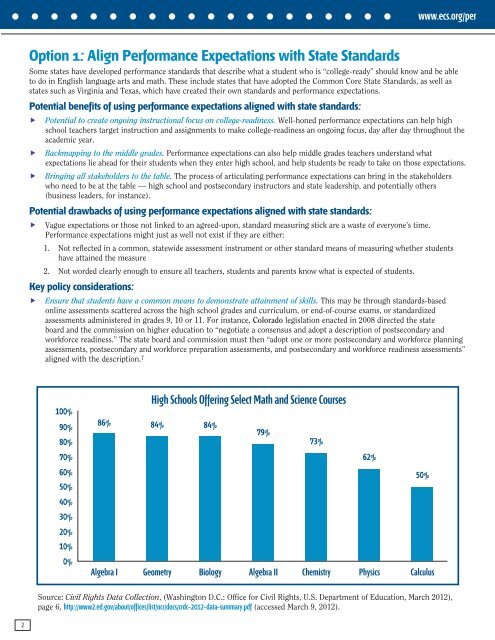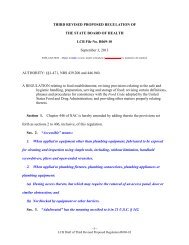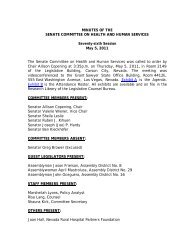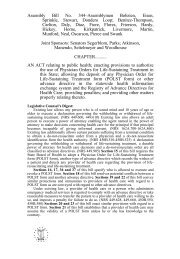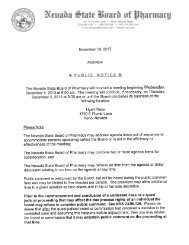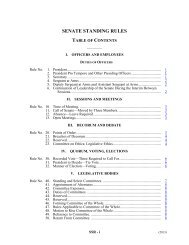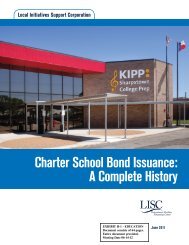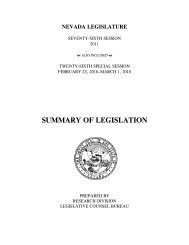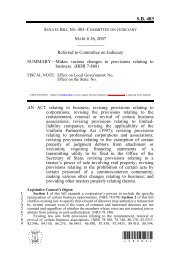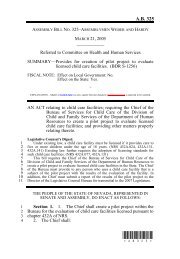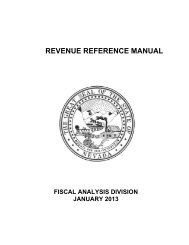Exhibit M-1
Exhibit M-1
Exhibit M-1
You also want an ePaper? Increase the reach of your titles
YUMPU automatically turns print PDFs into web optimized ePapers that Google loves.
2<br />
Option 1: Align Performance Expectations with State Standards<br />
www.ecs.org/per<br />
Some states have developed performance standards that describe what a student who is “college-ready” should know and be able<br />
to do in English language arts and math. These include states that have adopted the Common Core State Standards, as well as<br />
states such as Virginia and Texas, which have created their own standards and performance expectations.<br />
Potential benefits of using performance expectations aligned with state standards:<br />
Potential to create ongoing instructional focus on college-readiness. Well-honed performance expectations can help high<br />
school teachers target instruction and assignments to make college-readiness an ongoing focus, day after day throughout the<br />
academic year.<br />
Backmapping to the middle grades. Performance expectations can also help middle grades teachers understand what<br />
expectations lie ahead for their students when they enter high school, and help students be ready to take on those expectations.<br />
Bringing all stakeholders to the table. The process of articulating performance expectations can bring in the stakeholders<br />
who need to be at the table — high school and postsecondary instructors and state leadership, and potentially others<br />
(business leaders, for instance).<br />
Potential drawbacks of using performance expectations aligned with state standards:<br />
Vague expectations or those not linked to an agreed-upon, standard measuring stick are a waste of everyone’s time.<br />
Performance expectations might just as well not exist if they are either:<br />
1. Not reflected in a common, statewide assessment instrument or other standard means of measuring whether students<br />
have attained the measure<br />
2. Not worded clearly enough to ensure all teachers, students and parents know what is expected of students.<br />
Key policy considerations:<br />
Ensure that students have a common means to demonstrate attainment of skills. This may be through standards-based<br />
online assessments scattered across the high school grades and curriculum, or end-of-course exams, or standardized<br />
assessments administered in grades 9, 10 or 11. For instance, Colorado legislation enacted in 2008 directed the state<br />
board and the commission on higher education to “negotiate a consensus and adopt a description of postsecondary and<br />
workforce readiness.” The state board and commission must then “adopt one or more postsecondary and workforce planning<br />
assessments, postsecondary and workforce preparation assessments, and postsecondary and workforce readiness assessments”<br />
aligned with the description. 7<br />
100%<br />
90%<br />
80%<br />
70%<br />
60%<br />
50%<br />
40%<br />
30%<br />
20%<br />
10%<br />
0%<br />
86%<br />
Algebra I<br />
High Schools Offering Select Math and Science Courses<br />
84%<br />
Geometry<br />
84%<br />
Biology<br />
79%<br />
Algebra II<br />
73%<br />
Chemistry<br />
62%<br />
Physics<br />
50%<br />
Calculus<br />
Source: Civil Rights Data Collection, (Washington D.C.: Office for Civil Rights, U.S. Department of Education, March 2012),<br />
page 6, http://www2.ed.gov/about/offices/list/ocr/docs/crdc-2012-data-summary.pdf (accessed March 9, 2012).


